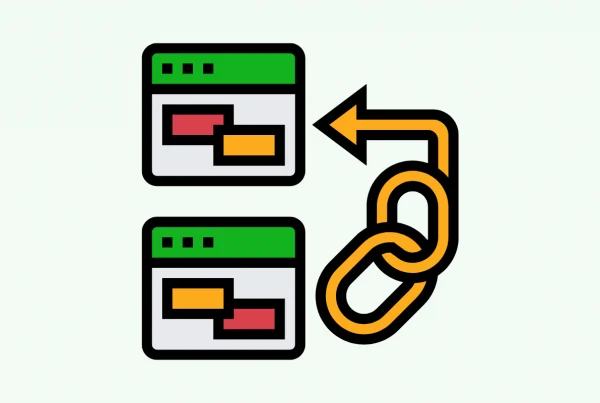How to handle empty category pages to preserve your SEO?
Estimated reading time: 6 minutes
Empty category pages are a hidden problem for many online shops. These pages might be empty because product offering fluctuates and sometimes products run out, new categories are set up too early, or there’s a tech glitch. But whatever the reason, they’re a headache for SEO. When users land on an empty page, they often leave annoyed, and search engines like Google notice this. Not only do these pages waste the search engine’s time, but your site may also be perceived as being of lower quality. In this blog, we’ll dive into why these empty pages are a big deal and how we can fix them to keep both visitors and search engines happy.
Don’t simply slap a ‘noindex’ tag on pages that fall without products. Continuously toggling between ‘index’ and ‘noindex’ status creates inconsistency, which search engines don’t like.This flip-flopping can damage your website’s credibility and trustworthiness in the eyes of search engines.
Handling Zero or Limited Product Pages
Picture this: you’ve put all the effort into creating a perfect product listing page, only to find it displaying a sad “0 products found.” It’s like throwing a party with no music – a total letdown. But don’t worry, there are strategies to deal with this situation, and we’ve got you covered.
Option 1: Fallback searches (only for non-indexable pages)
Fallback searches come into play specifically for product listing pages that are not indexable by search engines, like empty search results pages. In such cases, instead of leaving the page empty, fallback searches present users with related products without needing to reload or navigate away. This enhances the user’s experience, potentially reducing bounce rates.
However, for pages that are indexable by search engines, you’d want to avoid showing a message like “0 results for your search but we found related products.” This can be misinterpreted by search engines as Soft 404’s, potentially harming your SEO.
Option 2: The power of redirects
Now, for pages that are indexable by search engines like category pages, redirects can act as your trusty guides in the vast realm of ecommerce, preserving the value of your pages in terms of both traffic and backlinks. They’re like expert navigators leading your visitors and bots to new destinations when the path seems blocked.
Redirects: your trusted navigators in the ecommerce seas
Alright, let’s zoom in on redirections. When your visitors encounter a dead-end, these guides step in and direct them toward new horizons. There are two main types you need to know:
301 Redirects (The permanent move)
Think of a 301 redirect as a change of address card for search engines. It tells them, “Hey, our page has moved – and it’s a permanent move!” Imagine you had a page dedicated to “blue adidas shoes” but you’ve decided to stop selling adidas shoes altogether. A 301 redirect will effortlessly whisk your visitors away from the old page and lead them to your new “blue sneakers” section.
302 Redirects (The temporary detour)
Now, let’s say your zero-product situation is more of a short term thing than a permanent move. This is where the 302 redirect shines. It’s like waving a “Back in a Bit” sign on your virtual shelf. When visitors and bots are visiting a page for seasonal goodies like “home decor for Christmas,” a 302 redirect guides them to a similar page, ensuring they don’t leave empty-handed.
Where should empty category pages redirect to?
Imagine you’re at a mall, and you usually buy your favorite cookies from a certain store. One day, that store closes, but there’s a sign pointing you to their new location. You’d expect the new location to also sell your favorite cookies, right? Similarly, when you change the location (or URL) of a webpage, it’s best to direct your visitors to a similar page. If someone is looking for a page with special offers, redirect them to your new specials page. If you point them somewhere unrelated, like the homepage, it’s confusing and not helpful. In the online world, search engines, like Google, also get confused. They might not give your new page the same importance as the old one, leading to potential issues like a “soft 404” – which means they think the page doesn’t exist in the way it should.
How Verbolia handles redirects of empty product listing pages
First and foremost, we advise against launching a product listing page targeting specific keywords if it showcases fewer than 5 products. It’s essential to remember that product catalogs are dynamic, and the number of relevant products on a page can vary over time. For instance, starting with a category page displaying only 2 products risks that page eventually having no products at all.
To address this, Verbolia has implemented a system where product listing pages with low inventory are temporarily redirected (using a 302 redirect) to a similar, relevant product page. The beauty of this is that as soon as the original page is repopulated with products, the redirection automatically ceases. For added flexibility, we empower our users by allowing them to modify both the type of redirection (switching from 302 to 301, for example) and its destination. This granular control ensures that, using the Verbolia platform, you dictate the redirection strategy and destination for each page you craft.
So, fear not the empty shelves – with redirects as your guide, you’re in control of the shopping adventure. Here’s to happy redirecting, and may your online store always be bustling with content and satisfied shoppers!
About The Author
How can Verbolia help your e-commerce platform.


